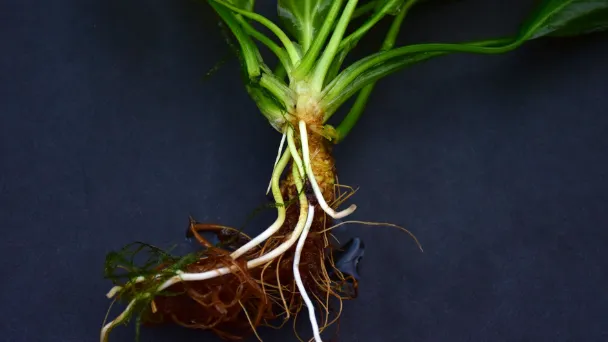How to Trim & Prune Amazon Sword - Plant Growth Rate
Written by Ivy
Jan 20 2023

Amazon Sword's growth can be slowed down and the plant's ability to produce runners and spread by trimming back its leaves and roots.
Yellowing leaves at the plant's base should be removed. In the same manner, remove any transparent foliage.
Once the dead foliage has been removed, examine the water quality, substrate nutrients, and lighting.
Amazon Sword Quick Stats Care Overview
.webp)
- Scientific Name: Echinodorus grisebachii/ Echinodorus amazonicus
- Family: Alismataceae
- Order: Alismatales
- Genus: Echinodorus
- Care Level: Easy
- Growth Rate: Moderate
- Maximum Size: 20 Inches (50 centimeters)
- Water Conditions: 60.8-82.4°F (20-27°C), 6.5-7.5 pH, 8-15 dGH
- Lighting: Moderate to strong
- Propagation: Vegetative; Runners
- Tank Placement: Mid-ground
How to Trim Amazon Sword
You don't have to worry about trimming or pruning with Amazon swords because of their slowly growing nature. This isn't a place where you'll spend a lot of time, aside from aesthetic trims to keep the plant looking tidy.
As the plant ages, you can cut off the old growth. Older leaves are located nearer to the bush's edge. Just remove the entire leaf to make room for new growth.
As Amazon swords are susceptible to infection, it is also a good idea to remove any diseased leaves. The leaves typically become frayed and black when this happens. To stop the illness from reaching the plant's roots, remove the afflicted leaves.
Allow the plant to develop after that. Space is the main concern for Amazon swords. To prevent crowding, use trimming. You won't need to do any pruning if the plant has enough room to grow.
Can You Trim Amazon Sword Roots?
Sword plants are heavy root feeders, as Smaug stated trim the roots to 2" and place a root tab beneath them. Make sure to have 3 to 4" of grave below them..webp)
How Do I Keep My Amazon Sword Short?
Simply trim down the longest leaves to the crown. You can try to cut leaves in half if you want to take some height off, but they usually die after that and they'll look weird, so it's easier to cut off the whole "stem" instead.Will Amazon Sword Leaves Grow Roots?
The leaves of Amazon Swords do not become rooted. The runner from which new growth arises can only be produced by the central stem, or nub in some cases.
It is not possible to stimulate new plant growth by trimming the leaves.
.webp)
Amazon Sword Plant Growth Rate
After becoming accustomed to its new environment, an amazon sword Plant will grow slowly and steadily in low-tech tanks. The Amazon Sword Plant, however, has a 12-inch maximum height. And given the right circumstances, they could reach a height of 18 to 20 inches or even more. A plant like the Amazon Sword is suitable for tanks with a lot of height. The plant will need to be heavily pruned in tanks with less height, such as a 10 gallon aquarium, as it can quickly spread out without it.
Latest Updated
- Benefits of Bugleweed - 7 Science-backed Health Benefits
- Bugleweed Dangers & Side Effects - Is It Poisonous?
- How to Plant Evergreen Trees - What You Should Know
- When to Plant Evergreens - Grow Guide for Evergreen Trees
- 12 Wonderful Evergreen Shrubs for Your Garden
- 12 Popular Evergreen Plants with Pictures for Beginners
- When And How To Prune A Lilac Bush Like a Pro
- How to Grow & Care for Lilac Vine (Hardenbergia Violacea)
- Japanese Lilac Tree (Syringa Reticulata) Care & Propagation Guide
- Shumard Oak Pros and Cons - What to Know
Popular Articles
- Winter maintenance of Antirrhinum Majus
- How to Grow Terminalia Mantaly Tree
- How to Grow and Care for Crossostephium Chinense
- How to grow Antirrhinum Majus in spring
- Peristeria Elata (Dove Orchid) Profile: Info & Care Guide
- Underwatered Snake Plant (Sansevieria Trifasciata) - Signs And How To Fix
- How to Care for Brazilian Jasmine Plant (Mandevilla Sanderi)
- How to Grow & Care for Graptopetalum Purple Delight in Summer
- Rosa Chinensis (China Rose): Plant Growing & Care Tips
- How to Care for Baby Sun Rose (Aptenia Cordifolia)